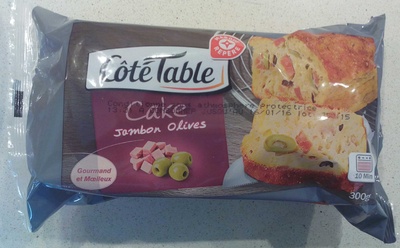Cake jambon et olives - Côté Table - 300 g
This product page is not complete. You can help to complete it by editing it and adding more data from the photos we have, or by taking more photos using the app for Android or iPhone/iPad. Thank you!
×
Some of the data for this product has been provided directly by the manufacturer Scamark.
Barcode: 3564700400159 (EAN / EAN-13)
Quantity: 300 g
Packaging: Plastic, Film, Protective gas
Brands: Côté Table, Marque Repère
Categories: Snacks, Salty snacks, Appetizers, Meals, Pizzas pies and quiches, Salted pies, Pies, Savoury-cake-with-cheese-vegetables-meat-fish-poultry
Traceability code: FR 69.270.001 CE - Chaponnay (Rhône, France)
Stores: Leclerc
Countries where sold: France
Matching with your preferences
Environment
Packaging
Transportation
Other information
Preparation: Se consomme froid ou légèrement réchauffé. Au four traditionnel (+ Picto four traditionnel) : Préchauffer le four à 180°C (thermostat 6). Sortir le cake de la barquette aluminium et réchauffer 10 min. Afin de conserver toutes les qualités gustatives du produit, nous vous déconseillons de le réchauffer au four à micro-ondes.
Report a problem
Data sources
Product added on by segundo
Last edit of product page on by packbot.
Product page also edited by org-scamark, scamark, tacite.











